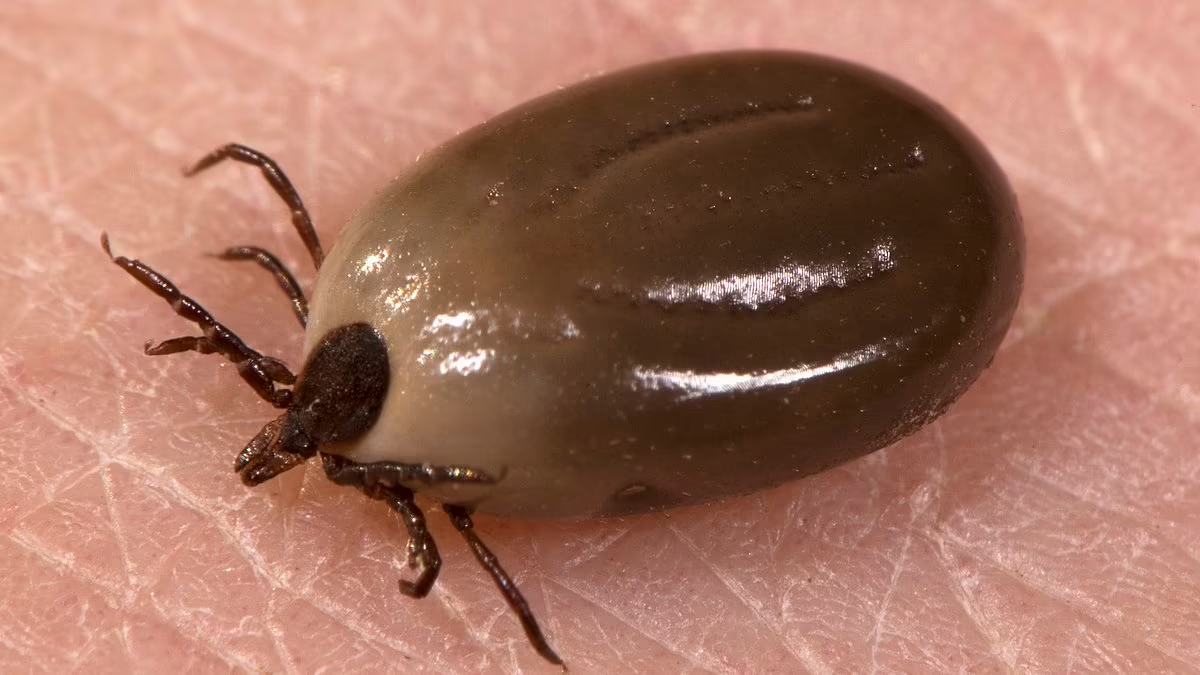Tick disease outbreak strikes Scotland

According to a study, the number of Lyme disease cases in Scotland may be five times higher than previously believed.
According to recent studies, up to 2,500 Scots may contract the sickness carried by ticks annually.
A bacterial infection known as Lyme disease can be transmitted from ticks to humans, resulting in symptoms like the flu and a characteristic circular rash.
A course of antibiotics can make it straightforward to treat, but in certain circumstances, individuals may experience crippling symptoms for years at a time.
Although Lyme disease is a recognized issue in Scotland, especially in the Highlands, precise estimates of the infection’s frequency are unknown.
Certain doctors order blood tests for laboratory confirmation when a patient presents with symptoms to their general practitioner. However, a doctor will frequently just prescribe antibiotics based on a patient’s symptoms, particularly if the patient has a rash and has been bitten by a tick.
To determine the number of patients most likely to have had Lyme disease, researchers from the Scottish Lyme Disease and Tick-borne Infections Reference Laboratory in Inverness conducted a study of general practitioners in the north of Scotland.
They looked through lab results and patient medical records for evidence, including being treated for an antibiotic prescription after being bitten by a tick.
Over 235,000 people’s worth of NHS records from 63 GP practices were examined by them in total. They discovered that from January 2019 to December 2022, 3,412 patients with Lyme disease or suspected Lyme disease received antibiotic treatment.
This was contrasted with the mere 652 laboratory-confirmed cases for the same period.
“Current data is based on laboratory testing figures, but many cases are diagnosed and treated by GPs without the need for a blood test and so don’t appear in official figures,” stated Dr. Sally Mavin, the laboratory’s director.
According to the study, there may be up to five times as many cases of Lyme disease as what is now believed to be the case—up to 850 cases year in the Highlands, or 2,500 cases annually throughout all of Scotland.
“In order to minimize the risk of contracting Lyme disease, it is crucial that we are aware of ticks, how to avoid getting bitten, and how to check ourselves and our children for ticks.”
How to deal with creatures that suck blood
MANUAL FOR SEEING AND ERASING A TICK: Bites from ticks don’t always hurt. Until a tick is visible on your skin, you might not detect it.
After spending time outside, routinely check your skin, clothing, and pets for ticks. They have a maximum size of 1 mm. They start off as a black dot, but after consuming blood, they grow up to become a pea-sized brown or grey ball.
How to carefully remove a tick
Tweezers with a fine tip or a tick removal tool should be used. These are available from some pharmacies, veterinarians, and pet stores.
Hold the tick as near to your skin as you can.
Pull up slowly, being careful not to crush or pressure the tick.
Use soap and water or antiseptic to clean the bite.
To get the tick out, avoid using matches, a lighted cigarette end, alcohol, or petroleum jelly.
There’s little possibility of becoming sick. Until you see a rash or become ill, there is nothing further you need to do.

I am a dedicated student currently in my seventh semester, pursuing a degree in International Relations. Alongside my academic pursuits, I am actively engaged in the professional field as a content writer at the Rangeinn website.









